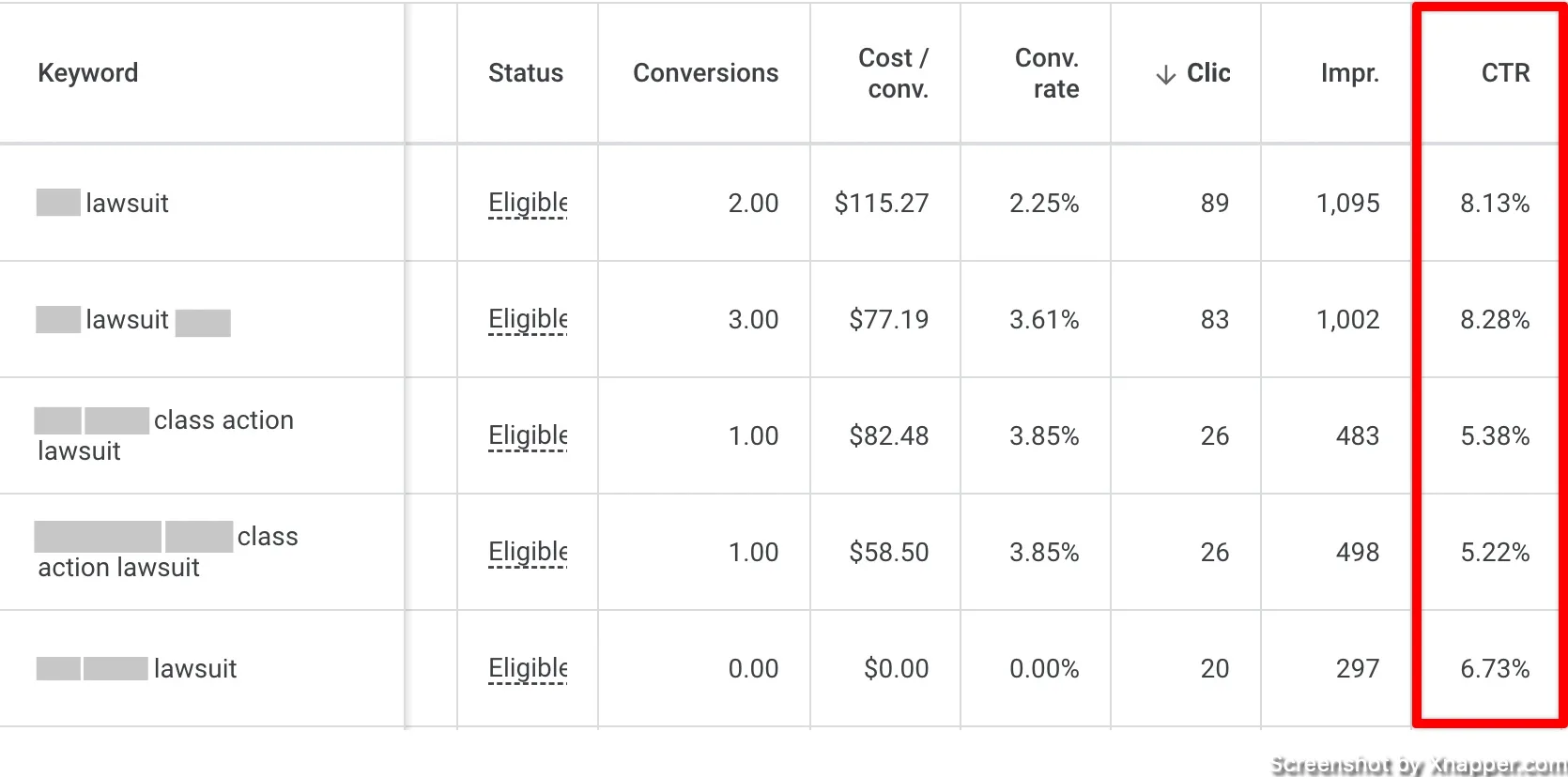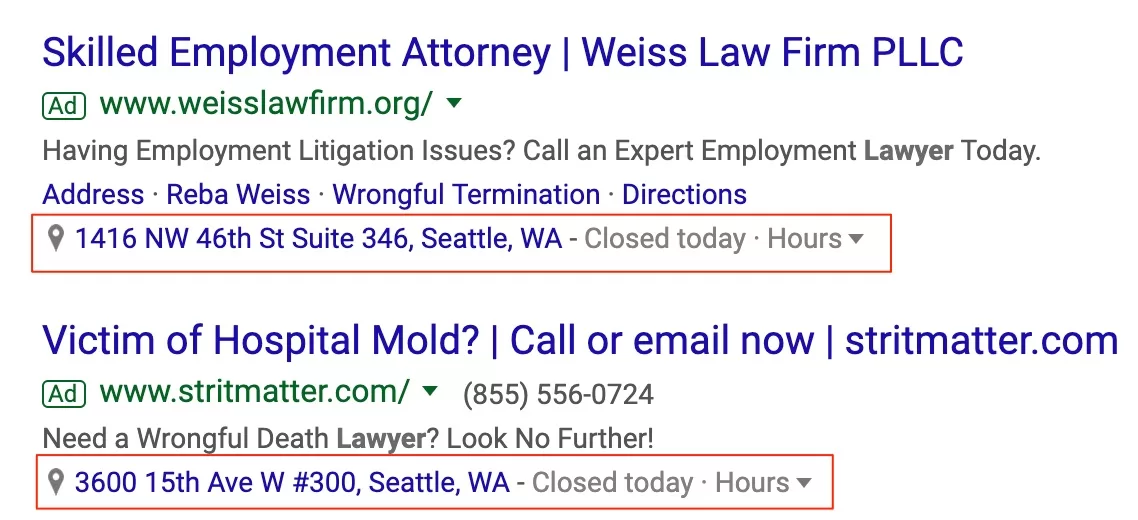
I get this question quite a lot, and there is no short answer. Well there is, but it might be both helpful and damaging at the same time. So, I thought I would dedicate a post about what a good CTR in Search Ads.
In digital marketing, and especially in paid marketing, people love to compare their performance to industry benchmarks, but should you?
I have to mention that we will only be talking about Search Ads. Display Network or YouTube ads usually have a lower CTR due to their nature. Most display ads, including Facebook, have lower CTR (click-through) because they target an audience that does not express a direct interest in the product or service.
The search network is different as ads are based on users searching for something on Google. Hence, they have a higher CTR.
What is CTR (click-through rate)?
CTR, or click-through rate, is a metric that shows how many people clicked the ad divided by the number of times it was shown (impressions). Basically, it shows how attractive your ad is.
For example, if your ad was shown 1000 times, and 100 people clicked on it, your CTR is 10%. The higher the CTR, the more clicks you will get. It also means that your text ad resonates very well with people searching for specific keywords.
On the search engines, CTR is similar, as the ads appear based on user’s searches. Display ads have a lower CTR, significantly lower.
What is a good Google Ads CTR?
On average, based on various surveys and reports, Search ads average click-through rate flactuates between 2%-6%. It heavily depends on the industry. Travel ads get higher CTRs than employment services. But you know what they say about averages? They lie.
Imagine you have three advertisers. One has a CTR of 1%, the second 5%, and the last 10%. Their average CTR is 5.3%. That number undervalues the third advertiser and is 5 times higher than the first.
Use average just to understand if something needs fixing. In my experience, if you have a Search ads CTR lower than 5%, you need to look at your keywords and ads. Chances are there is something wrong that needs to be fixed.
Here is an example of one advertiser that is in a very competitive niche – legal.

The industry average is barely 3%. I would recommend not focusing on reaching any industry benchmarks but focusing on increasing your own CTR.
How to improve your Search Ads CTR?
Write better Search Ads
Since people see your ad, it makes sense to work on it first. The easiest way to do it is to focus on your keywords because that’s how your ad got shown in the first place, right? Someone searched for a phrase. It matched your keywords and triggered the ad. This is what search advertising is all about—matching that user search intent.
Your first goal is to make sure that whatever people search for matches your ad. People don’t have a lot of time to read all the texts. First impressions matter a lot. If you need some ad ideas, I have a post with 12 tips to make your Responsive Search Ads stand out.
Increase bids
The higher the bid, the higher your ad position, and we know that CTR increases when your ad is in the top positions. Of course, not always increasing bids will guarantee you better position, that depends on many factors. But usually, you get more exposure, and your position increases along with CTR.
Of course, you’re not always able to increase bids as this will increase your costs as well. In this case you might focus on increasing quality.
Increase your Quality Score
Quality Score is measured from 1 – 10. 10 being the highest. Each keyword has a Quality Score, and it is a combination of a few key factors: keyword relevancy, landing page relevancy, and expected CTR. You can add a column that displays the Quality Score for all your keywords. Click on Modify columns in your keywords view and search for Quality Score. Add it, and voila.
Your keywords have to be relevant to your ads, and both your ads and keywords must be relevant to your landing page. This is why having a good campaign structure pays off.
If you have a few keywords in the ad group, writing a relatable ad to those keywords is easy. Then, you have to select a landing page that best fits both.
Google rewards your efforts by giving you a higher Quality Score, which might reduce your CPC or increase your position. And that will impact your CTR.
Note. Quality Scores on Google display ads and Search ads are different. So, your low click-through rate on display advertising does not impact your Search ads.
Add negative keywords
Working with negative keywords is one of the best things you can do when it comes not only to increasing CTR but also optimizing your campaigns. If you’re using broad match keywords or phrase match, chances are you’re getting some traffic from keywords that are not that relevant to your business. Finding those keywords and removing them will not only save money but also increase CTR.
Visit the Search term report and, check all the keywords that drove the traffic, see if you can exclude the ones that are not suitable or do not convert. The budget you save could be used to increase bids for existing keywords or add new keywords. By the way, you may also find relevant keywords that can be added to your ad groups.
You might also find keywords with a lot of impressions and zero or just a few clicks. You can remove them as well. However, if those keywords are very important for your business (your target keywords), then maybe consider moving them to a different ad group and working on creating more relevant ads. There is a reason why the ad is being shown, but no one clicks. Fix it.
Use ad assets (extensions)
I’ve written about ad assets in a whole post. The short version of that is to create and add as many assets as makes sense. They all can increase CTR as they make your ad more noticeable.
Ad assets are small pieces of information added to your ad. It might be a link, a price, or a location. Whichever Google “feels” is more useful in each search query. You can’t control which assets appear and when. This is all Google.

But you help a lot just by having them. Also, having a higher Quality Score increases your chances of having an ad asset displayed with your ad.
CTR is not your goal
Click-through rate (CTR) is important. It shows if people are clicking on your ad. But it is not your main goal. Your goal with Google Ads is to get conversions. It might be leads or sales, but you want people not only clicking on your ad but also buying from you.
What good does a 50% CTR do to you if no one who came to your website purchased anything? Sure, you can brag about your amazing CTR, but you will go bankrupt if this continues for a while.
Look at these campaigns:

One campaign has a CTR of 40%, but no conversions. The other has 4% CTR, but 42 conversions and a conversion rate of 11%. Which campaign is performing better? Of course, the second one, with 4% CTR, brings me conversions.
Obviously, I can work on increasing CTR for that campaign and get even more clicks and, hopefully, conversions. However, what I should not do is look at other benchmarks and compare myself to industry averages.
I need to focus on things that bring value to my business and not impress anyone with meaningless metrics.
I share weekly tips on how to create, manage, and scale Google Ads campaigns. Subscribe to my free newsletter.
I’m also down with connecting on LinkedIn.
Or follow me on X, for some quick updates and fast insights.